Project Updates
December, 2016
We have been busy assembling a team to aid an intensive sampling campaign on the semi-improved field site. The spatial variability in N2O emissions have been measured before and after an artificial urine application to 115 sample points across the 10 ha field site. In addition to the N2O emission measurements, important soil properties which influence N2O emissions are currently being analysed, in order to understand the drivers behind spatial variability in N2O emissions from upland soils. Many thanks to all the volunteers who made this possible, including Dave Arnott, Sian Rowlands, Non Williams, Maria McMahon and Lucy Greenfield and the work put in by Gianmarco Sanfratello and Jon Holmberg.
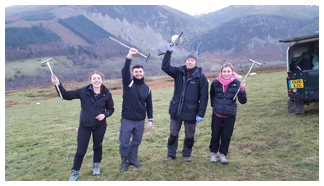
Pictured (from left to right) Lucy Greenfield, Gianmarco Sanfratello, Jon Holmberg and Non Williams – helping out with the soil coring in the field.
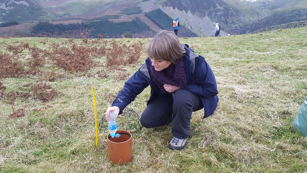
Karina Marsden – applying artificial urine to the greenhouse gas chambers.
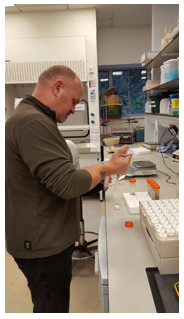
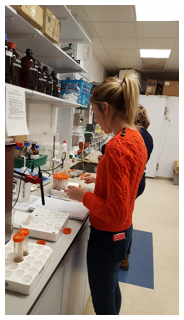
Dave Arnott (left) and Non Williams (right) helping out with the soil extractions and pH and EC measurements of the soil cores in the laboratory.
November, 2016
We had a visit from Alice Charteris and Laura Cardenas, to collect the soil from the semi-improved field site, which will be used for the controlled incubation studies investigating factors influencing N2O emissions from urine influenced soil cores. Thank you to Jon Holmberg for stepping in to help with this without advance notice.
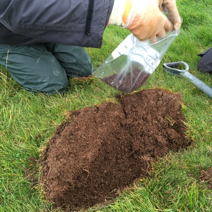
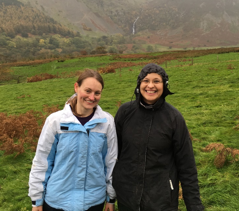
Left: Laura Cardenas collecting soil from a sampling point. Right: Alice Charteris and Laura Cardenas (from left) looking happy after finishing sampling just before it started to rain!
We have recently completed all of the seasonal urine collection trials for the semi-improved field site, where next year we will attempt to collect urine from sheep grazing on the open mountain. In addition to the spring urine collection, another collection was completed in the summer and one in the autumn. A urine collection trial was also held in the lowlands, with sheep grazing Italian Ryegrass. Early results indicate a strong positive correlation between the total N content and the electrical conductivity of urine samples. Urine volume and N concentrations have been shown to vary widely across all seasons. Further chemical composition analyses of the urine events are now underway.
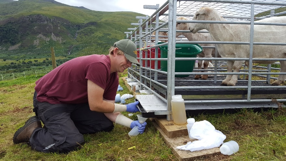
Jon Holmberg collecting sheep urine in the field.
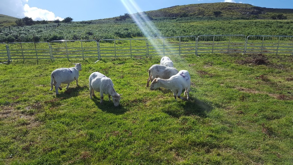
Summer grazing at the semi-improved Uplands-N2O field site.
October, 2016
The Swansea team have recently had another successful deployment attaching Daily Diary tags with GPS to 30 sheep on the Uplands-N2O field site. Sheep were also filmed to provide information about their different behaviours that will be used to analyse the tag data. The first deployment data is currently being processed and analysed to classify sheep behaviour across all 30 tags and combined with the GPS data to find out where the behaviour occurs. It will be interesting to see the behaviour, movement and patterns of urination events across the landscape once the data have been fully analysed.
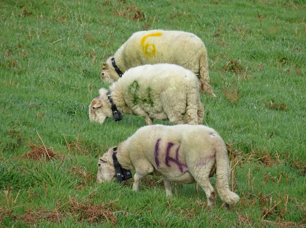
Three sheep fitted with two daily diary tags and a GPS and numbered to aid identification for filming.
In addition, we have now begun monitoring N2O emissions from sheep urine collected and applied back to the soil at the semi-improved field site in autumn.
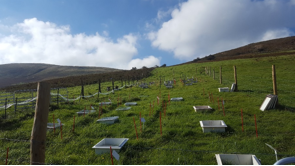
Greenhouse gas chambers for measuring N2O emissions from spring-applied sheep urine (foreground) and autumn-applied sheep urine (background).
September, 2016
A very productive and interesting Uplands-N2O project team meeting was held at Bangor. Project collaborators enjoyed hearing the latest results collected on the project and visited the Uplands-N2O field site. It was also a chance to welcome Alice Charteris to the team, who will be conducting the incubation studies at Rothamsted Research.
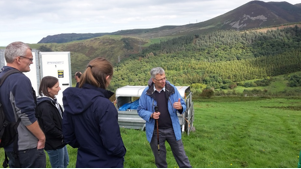
Ian Harris (farm manager) explaining the management history of the field site.
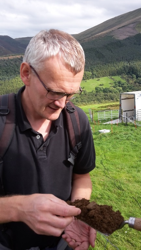
Mick Whelan investigating the soil at the Uplands-N2O field site.
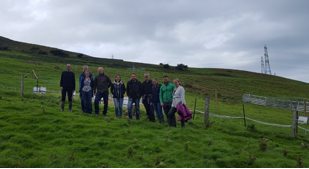
Group photo of the Uplands-N2O research team
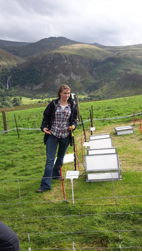
Karina Marsden discussing the N2O emission factor monitoring experiments.
16th June 2016
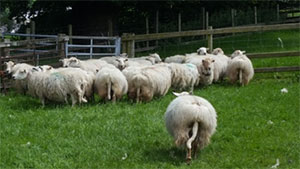
Gathering the GPS tags from the Welsh Mountain ewes.
Another visit from the Swansea team at Henfaes today, to collect the GPS tags that have been deployed on the 30 sheep for a period of 36 days, which have been grazing on the semi-improved enclosed upland area. The sheep have been brought down from the uplands site and the Swansea University team will be busy analysing the data over the coming weeks.
14th June 2016
The first uplands-specific urine patch N2O emission factor measurements have begun, view the experimental plots and the treatment application process in the images below.
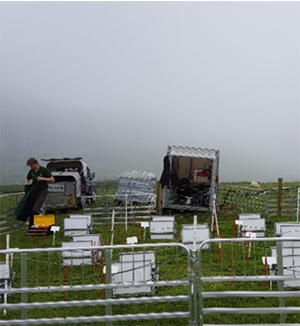
Experimental plot containing automated greenhouse gas chambers at the semi-improved Uplands-N2O field site.
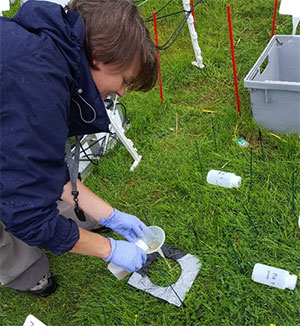
Applying urine to the field site using a funnel and template based on an average urine patch size.
1st June 2016
An exciting day for the project as our mobile laboratory containing greenhouse gas monitoring equipment is brought from the lowlands to the uplands to begin monitoring the spring/summer urine application. Now to check how the system performs without mains power!
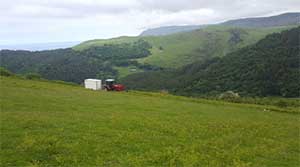
Moving the horsebox which houses the greehnouse gas analytical equipment to the Uplands-N2O field site.
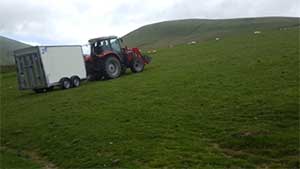
Moving the horsebox which houses
the greehnouse gas analytical
equipment to the Uplands-N2O field site.
23rd May 2016
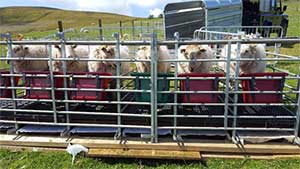
Welsh mountain ewes in urine collection pens.
The first seasonal urine collection trial is now underway at the field site – a total of 10L will need to be collected for use in the field trial to determine an uplands-N2O emission factor from sheep urine.
12th May 2016
The team at Swansea University have successfully deployed 30 barren ewes with GPS collars onto the semi-improved upland field sites. A great effort by all involved and we will be looking forward to seeing some animal movement and behaviour data in due course.
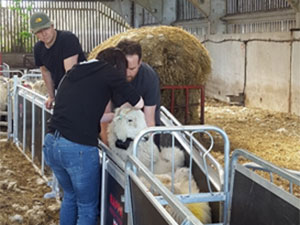
Putting the GPS collars onto the Welsh Mountain ewes.
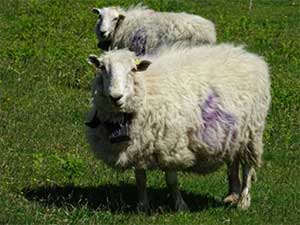
Welsh Mountain ewe fitted with GPS collar in the field.
1st April 2016
The task of coring 450 soil cores and bulk density cores at both 0-5 cm and 5-10 cm is now complete! A great effort by the Uplands-N2Otechnician, Jon Holmberg, and thanks to Andrew Packwood for assistance marking out the GPS points. Check the results section of the webpage to see how we are getting along with the analysis and mapping.
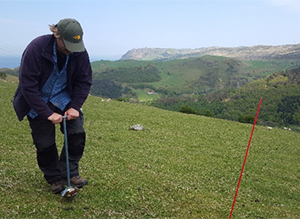
Taking soil cores from the semi-improved field site.
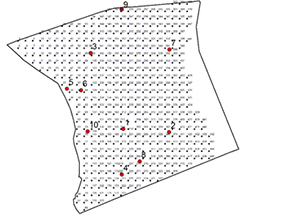
Map of the 450 soil cores taken on a 15 m by 15 m grid across the semi-improved Uplands-N2O field site.
17th March
A pilot study is underway at Henfaes, carried out by the team from Swansea University, to test their designs for the GPS collars and rear sensor tags and to determine if sheep urination behaviour can be detected in the field.
